
Rhododendron: 9 Successful Planting Combinations
in the garden
Contents
Rhododendrons are the stars of spring shade gardens, bringing light and contrast with their abundance of delicate flowers. Whether elegant, sophisticated or wild, in striking pit or mixed arrangements, they easily blend into any setting.
In a grove on the edge of woodland for a spectacular effect
Particularly floriferous, rhododendrons maintain a bushy habit, green foliage and make excellent bushes for woodland edges. From mid-spring, their spectacular flowering will illuminate the whole area. They combine well with bushes that have complementary qualities and equally remarkable spring flowering, such as Andromedas or Pieris with splendid glossy evergreen foliage and charming fragrant bell-shaped flowers, Japanese Azaleas, Japanese Quinces, Skimmias, Kalmia latifolia or Magnolias with splendid delicate flowers, Mexican Orange Blossoms, Deutzias, Camellias and Hydrangeas which will take over the flowering.

Rhododendron ‘Melrose Flash’ – Japanese Azalea ‘Rex’ – Kalmia latifolia ‘Opencage’ – Magnolia Soulangeana Rustica ‘Rubra’
Read also
Rhododendron: Planting, Growing and CareBrightening up a shady border
Large Rhododendrons will bring contrast, colour, nuances and light to a somewhat dull partial shade border. They are therefore preferably placed at the back of the border, mixed with broad and linear foliage. They are accompanied by their beautiful shade-loving, acidophilous companions such as ferns with finely carved foliage offering an ideal contrast in shape, the flamboyant Hostas or the luminous Brunneras. The opulence of their flowering brings beautiful luminosity and density to these shady corners. White varieties like ‘Madame Masson’ subtly brighten this foliage environment, while varieties with vivid colours like ‘Nova Zembla’ are perfect for serving as focal points in the garden.
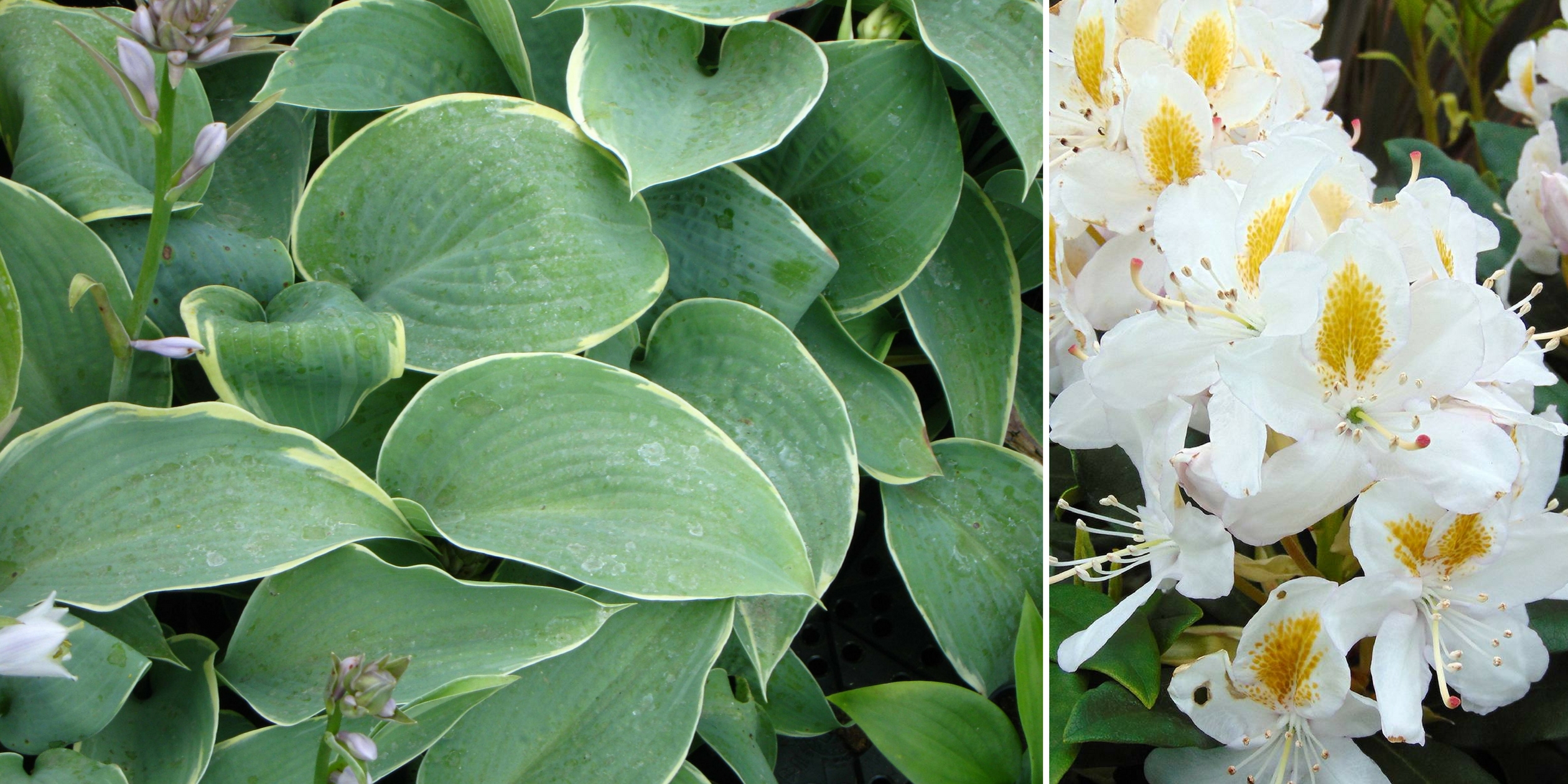
Hosta ‘Frosted Dimples’ – Rhododendron ‘Madame Masson’
Discover other Rhododendron and Azalea
View all →Available in 1 sizes
Available in 1 sizes
Available in 1 sizes
Available in 1 sizes
Available in 1 sizes
Available in 2 sizes
Available in 1 sizes
Available in 1 sizes
Available in 2 sizes
Available in 2 sizes
With Japanese Maples
Here’s a delightful pairing to brighten up the shady corners of your garden! The densely flowered masses of deep pink from a Rhododendron ‘Marcel Ménard’ or ‘Winsome’ will appear lighter alongside a magnificent Japanese maple with feathery foliage in soft green or deep red, finely dissected. The Acer adds height and airiness, perfectly shading heather soil beds as companions to Rhododendrons, which can also be paired with Chinese or Japanese Azaleas and Heathers.
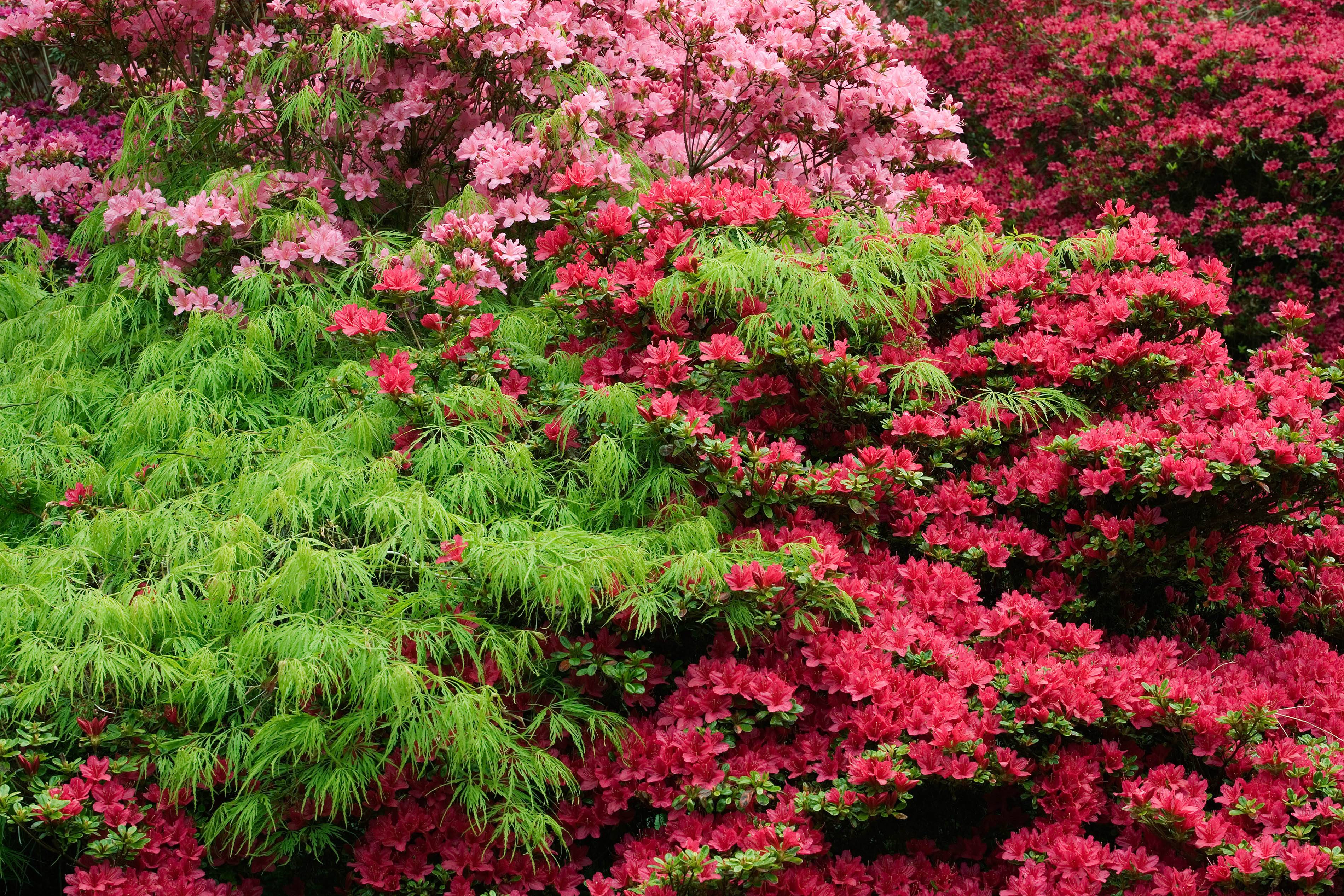
Acer palmatum and Rhododendrons in spring
In a cool rock garden
With their homogeneous silhouette and a uniform blanket of flowers, small rhododendrons are perfect for woodland settings in shady beds. The dwarf varieties, hybrids of yakushimanum, such as ‘Golden Torch’ or ‘Dream Land’, very compact with a slightly wider than tall rounded habit, form dense and highly floriferous bushes under trees or along borders or pathways from April onwards. Pair them with dwarf Hostas, luminous Epimedium, Bleeding Hearts, Hellebores, primroses or Maidenhair Ferns with their finely cut, highly graphic leaves.
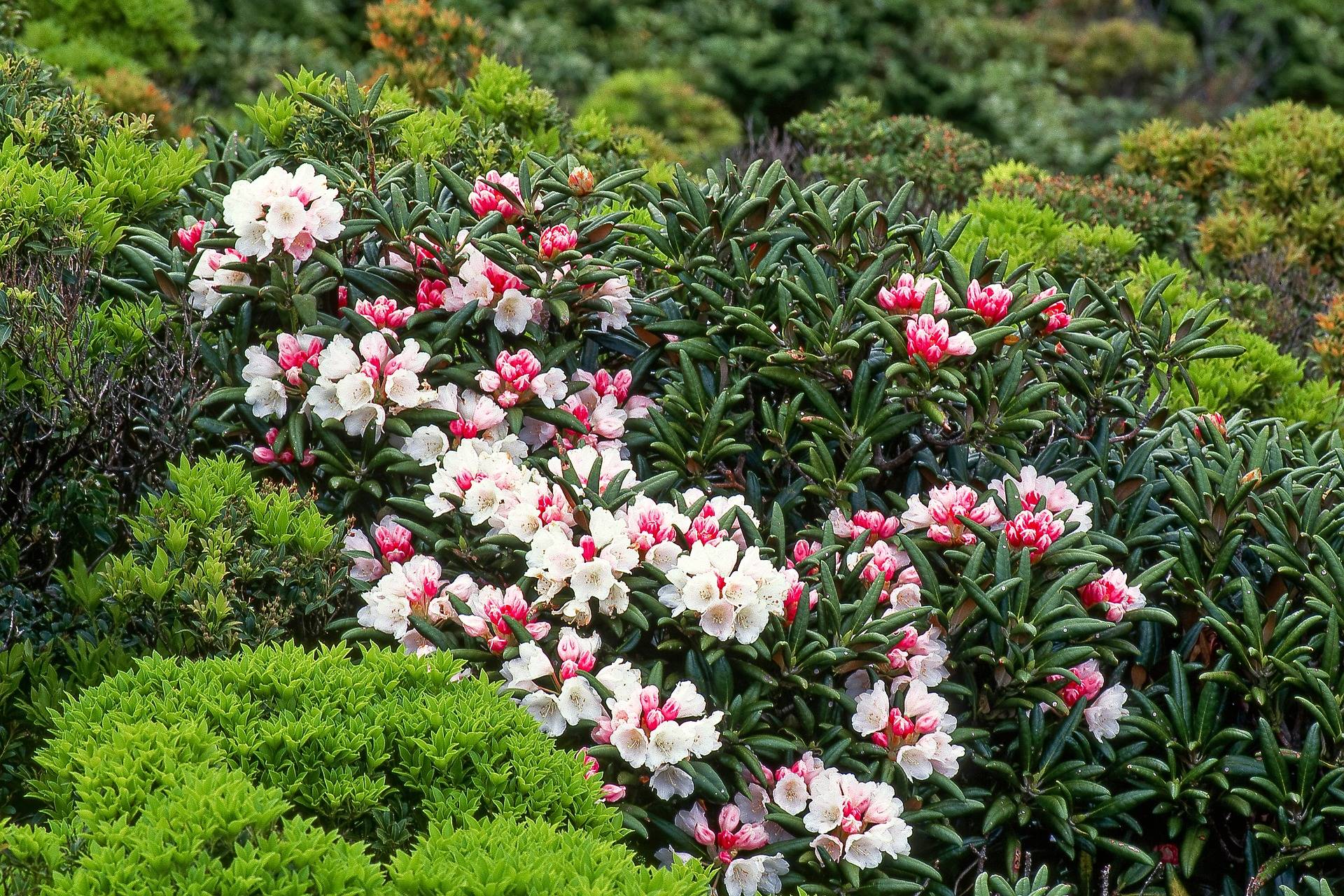
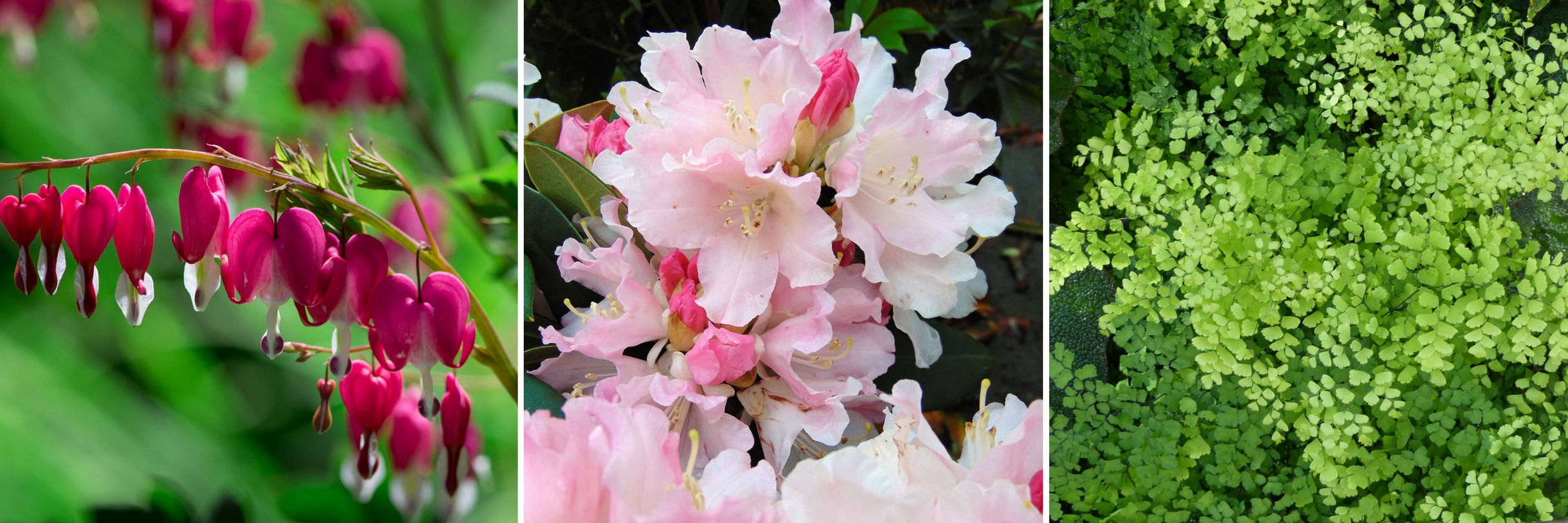
Dicentra spectabilis – Rhododendron ‘Dreamland’ – Maidenhair Fern
Shades of pink chart
Soft pink, marginate pink, crimson pink or sugared almond pink – embrace monochrome by mixing pink tones: they will harmonise effortlessly, creating a setting imbued with delicacy, poetry or depth. The rhododendron offers pink in every shade and allows for endless variations. To create a romantic scene, the gentle pink of an R. ‘Dream Land’ pairs beautifully with the flowers of Chinese Azalea ‘Homebush’ in bold magenta or the delicate lilac of a Japanese Azalea ‘Koromo Shikibu’. It will be perfect alongside a Kalmia latifolia with pale hues, a Pieris japonica ‘Katsura’ with its delicate soft pink bell-shaped flowers, the pink blooms of a Camellia, a pink Bleeding Heart, or even a Japanese Quince ‘Pink Lady’. It will be utterly charming surrounded by a tapetum of low-growing plants such as heathers, spring bulbs (bluebells), and Bergenia. The fiery foliage of Acer (‘Dissectum Garnet’) will create a bold backdrop, while the silvery leaves of a Hosta in the foreground add a softness of tone that harmonises beautifully with the entire spectrum of pink shades.

Japanese Quince ‘Pink Lady’ – Pieris – Camellia Japonica ‘Kerguelen’
Peach Melba! (Note: This is the British English translation of the French dessert name "Pêche-melba," named after the famous dessert created by Auguste Escoffier for Dame Nellie Melba. The exclamation mark is preserved to match the original's tone.)
Some rhododendrons are sought after for the richness of their spring flowering in peach-apricot hues. The tangy orange clusters of R. ‘Olga’ pair beautifully with the warm tones of a Chinese Azalea ‘Fire Ball’, the colourful young shoots of Pieris, and the red-purple and garnet foliage of the Japanese Maple ‘Atropurpureum’, the flowers of Loropetalum chinense ‘Fire Dance’ or the coral-orange blooms with salmon highlights of a Japanese Quince ‘Mango Storm’. For a more contemporary-inspired scene, pair it instead with the white flowers of a Bleeding Heart and the coppery-pink foliage of the fern ‘Dryopteris erythrosora’. For perfect harmony, consider the Gordon’s Currant (Ribes gordonianum) with its clusters of tubular red flowers with a peach throat.
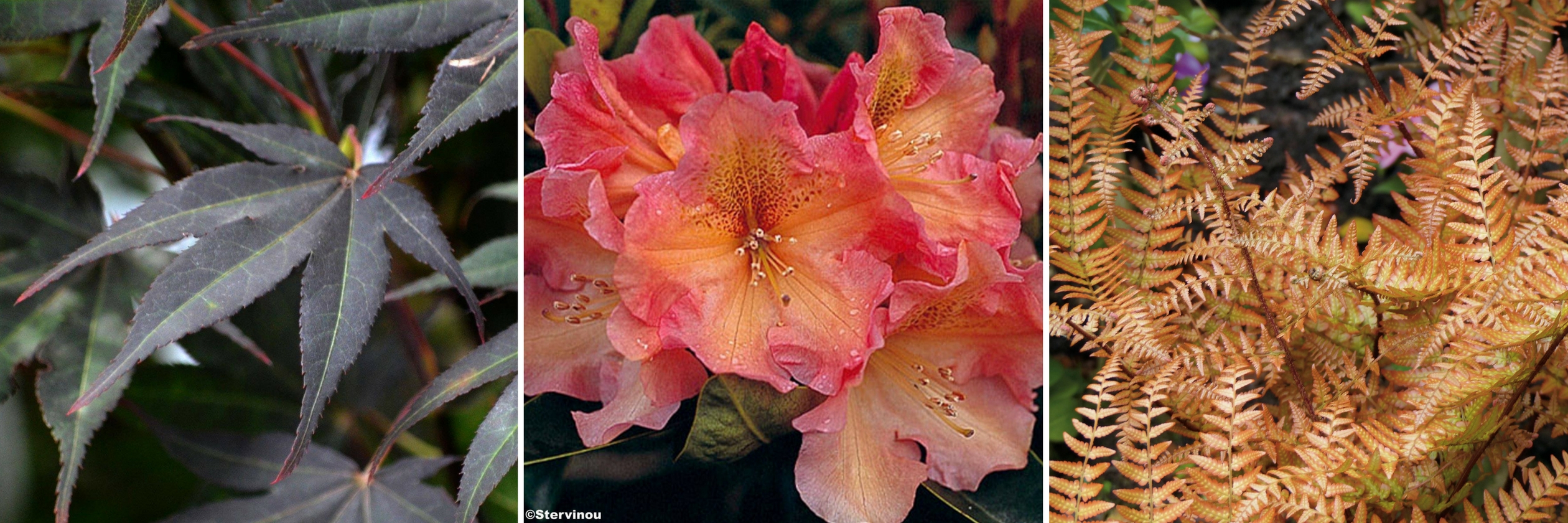
Japanese Maple ‘Atropurpureum’ – Rhododendron ‘Olga’ – Dryopteris erythrosora
With other "Rhodos
While these evergreen bushes help maintain a touch of green in the garden during autumn and winter months, planted at the back of borders alongside other Rhododendrons from the same group, they will create spectacular kaleidoscopes of spreading flowerings in spring: as early as March, the Rhododendron ‘Calsap’ displays magnificent early flowering, ‘Olga’ will take over in April-May, while ‘Melrose Flash’ with its bicolour cream and pink flowers will adorn your border edges, terraces and flowering hedges in June. The rich hues will find their perfect place in themes of unbridled opulence, while the more subdued tones will form equally vibrant combinations that may be less aggressive. Though their spring flowers make a very attractive feature, a solitary rhododendron may appear rather dull for the rest of the year. It’s preferable to plant them in spaced groups, mixed with plants featuring less dense foliage such as ferns, Japanese Maples, Pieris and ornamental grasses.
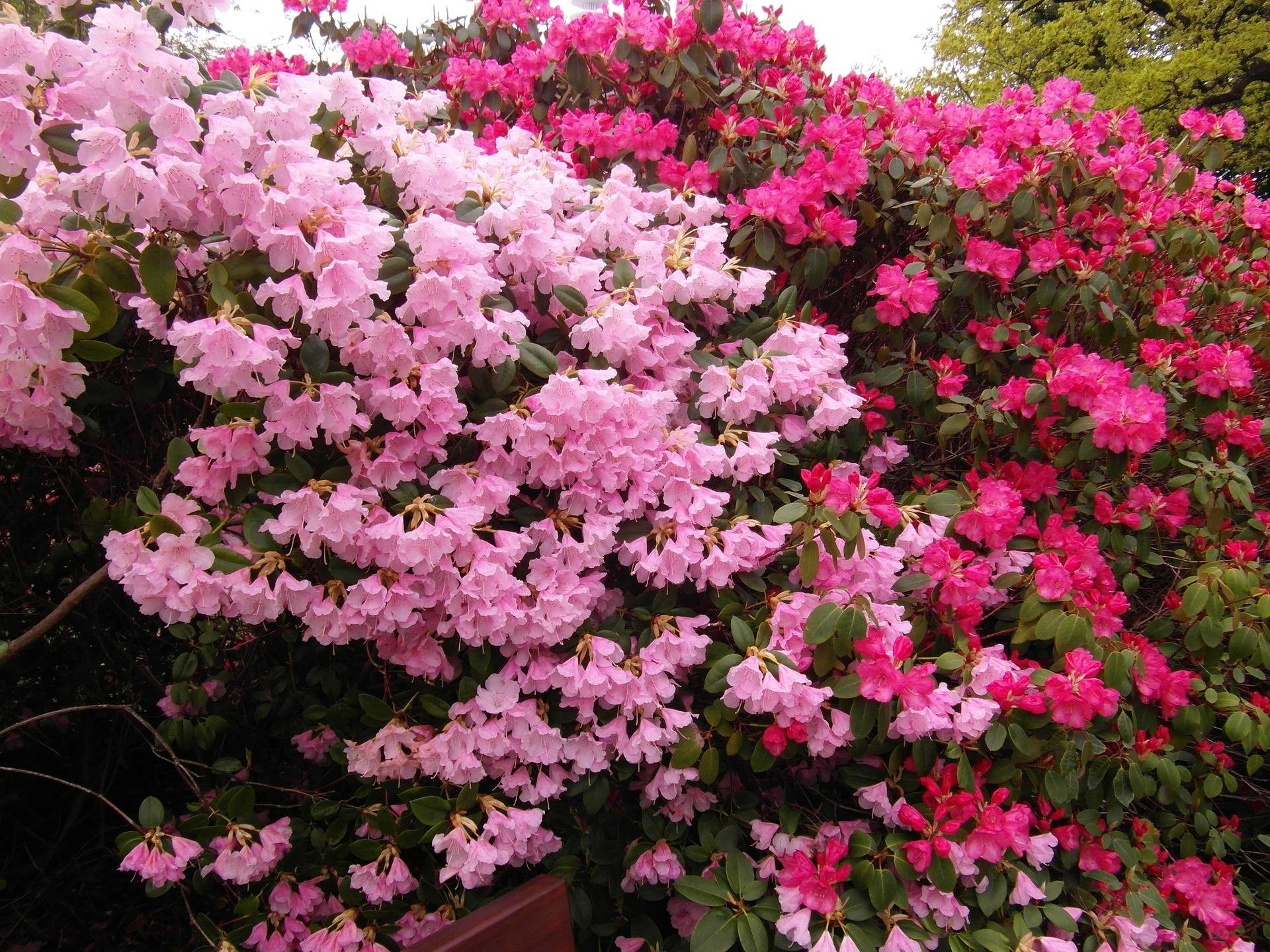
With heathers
For a beautiful early spring scene, plant rhododendrons with a multitude of heathers (Erica) in white, deep pink or lilac pink. They will form a tapetum against which the vividly coloured flower clusters of R. ‘President Roosevelt’ or R. ‘Graziella’. will stand out. The upright forms of rhododendrons will introduce a striking pit that will break the uniformity of the heathers.
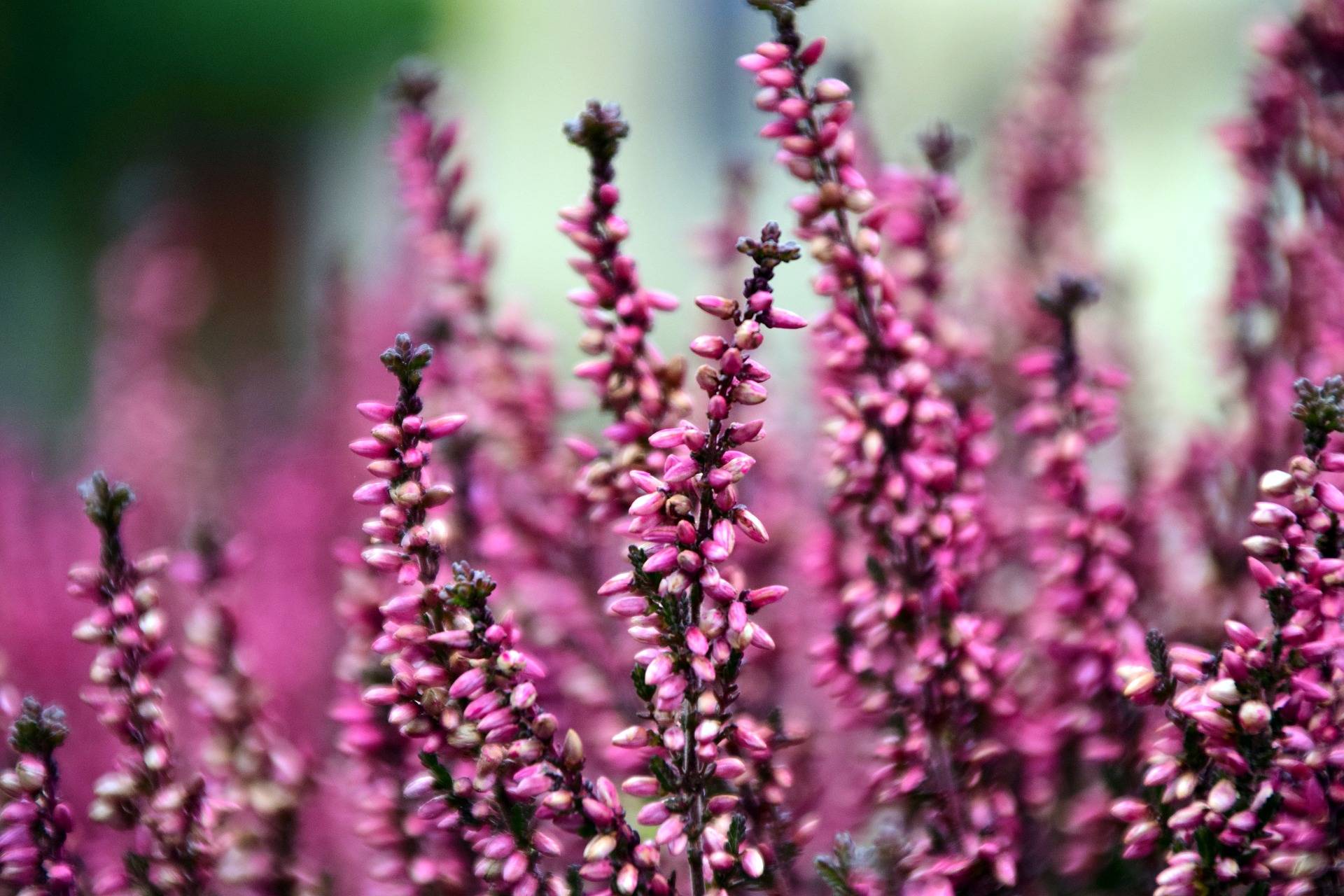
Erica x darleyensis ‘Kramer’s Rote’
In a pot on a shaded terrace
The modest size (50-80 cm) of certain varieties and their slow growth make them suitable for container cultivation: planted in large pots, the dwarf Rhododendrons ‘Dora Amateis’, ‘Impeditum’ will make attractive decorative specimens year-round. With their glossy evergreen foliage, they can serve as boxwood substitutes. Highly floriferous, they also pair beautifully with the abundant flowering of Camellias and Japanese Azaleas, as well as with the freshness of spring bulbs like daffodils or hyacinths.
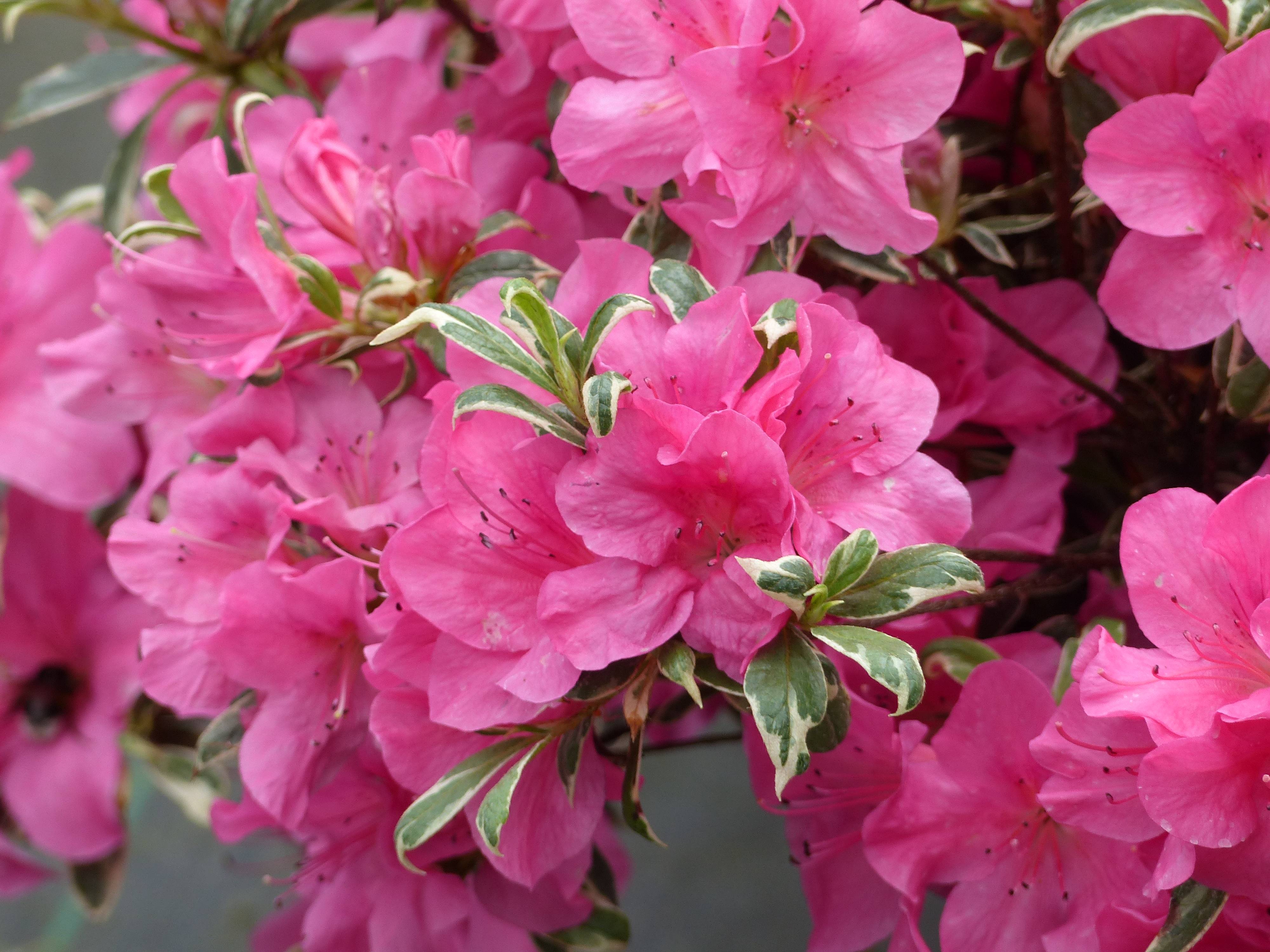
Japanese Azalea ‘Silver Prince’
- Subscribe!
- Contents


































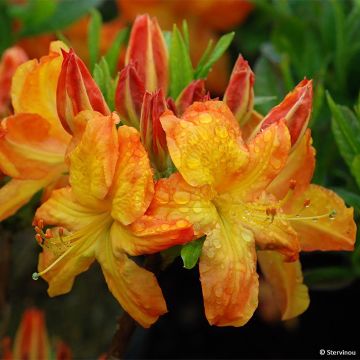
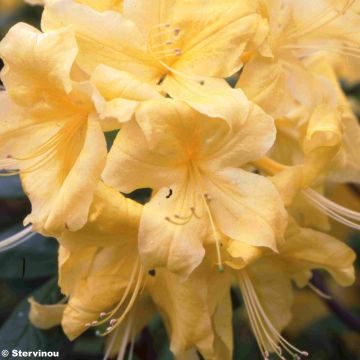
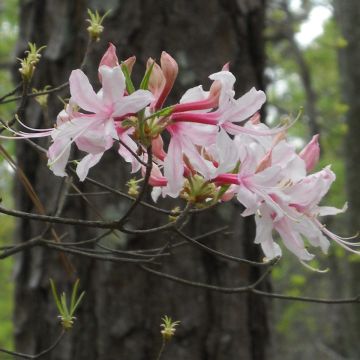
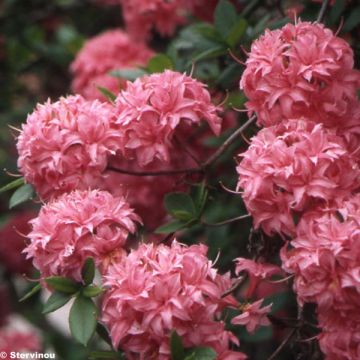
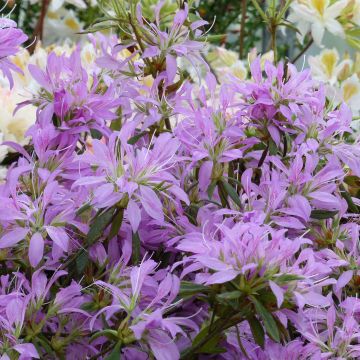
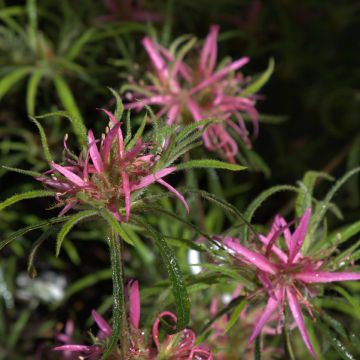
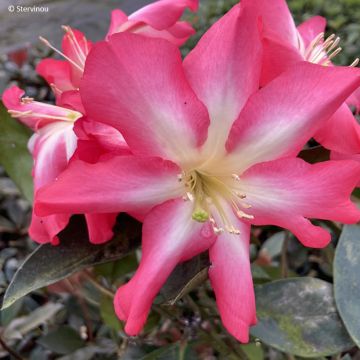
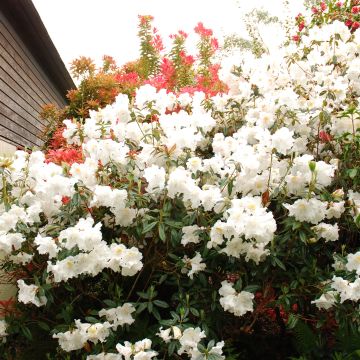
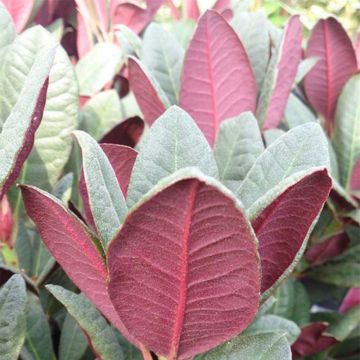
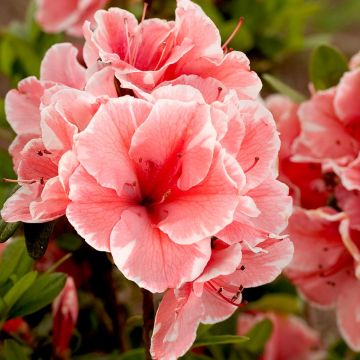
Comments